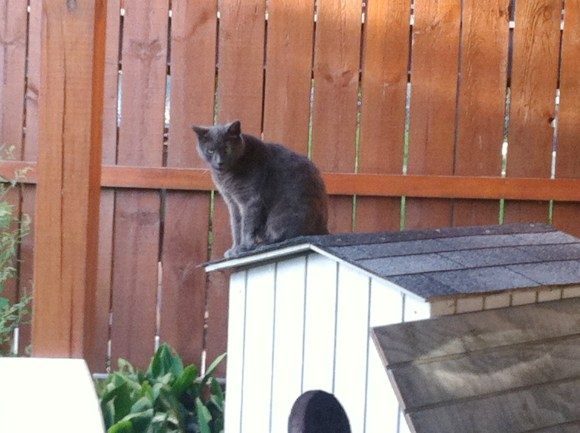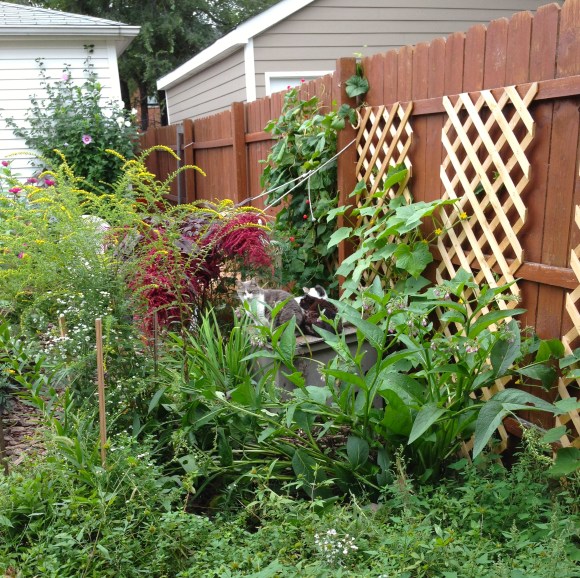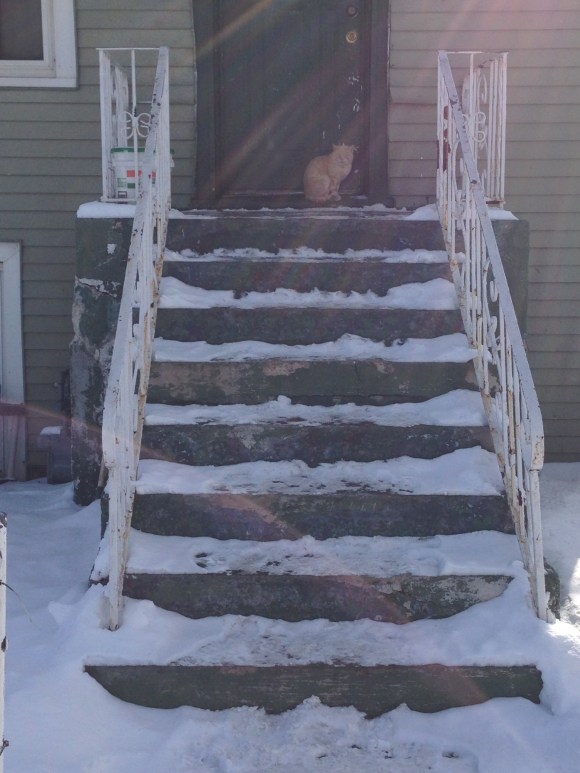The Story of Clover: From Outdoor Cat, to Mama Cat, to Colony Cat, to Indoor Cat
Last week brought incredible news: Clover was adopted off the street.

Clover was part of the Eleanor Rigby Colony. I started TNR there in December of 2008 for an overwhelmed, disabled, elderly feeder named Rosemary. This is part of what the colony looked like then. Clover is all the way in the back on the left. Her friend Patches is to the right.

Rosemary let me do whatever I wanted. I set traps all winter and stayed in her house for hours waiting for the cats to go in for TNR. I TNR’d eight cats, but did not get Clover.
I made four outdoor cat shelters and put them under Rosemary’s porch. That following summer, Clover had five kittens in one of the shelters.

They were tiny. The family stayed under the porch.

And even moved to another shelter under the porch.


At first I wanted to wait until the kittens were weaned before bringing them inside for socialization and adoption. Clover acted feral and I did not want to stress her out. But, one kitten disappeared. And then I found another one dying. I rushed the kitten to the vet but s/he died on the way. I decided to bring the remaining cat family inside. This time, Clover was easy to trap. Clover was always protective of her kittens, and never sought attention from me.
 The little grey and white kitten in back also died after I brought him inside. The two other kittens in front were sick with URI but pulled through. Once they were weaned, three weeks after being inside with me, I TNR’d Clover and reunited her with her colony at Rosemary’s house.
The little grey and white kitten in back also died after I brought him inside. The two other kittens in front were sick with URI but pulled through. Once they were weaned, three weeks after being inside with me, I TNR’d Clover and reunited her with her colony at Rosemary’s house.

The kittens were eventually admitted into Tree House. Their admission was delayed until they were a bit older, because their neuter surgeries were complicated – one kitten had a heart murmur, and the other kitten has an allergic reaction to the anesthesia. But Charlie Angel and Captain Jack finally made it. Clover was a very healthy cat, but her kitten’s illnesses showed how hard it is for them to survive outside.

Clover stayed outside with her colony for the next few years. Rosemary eventually disappeared in 2010. I never found out what happened to her, but her house is still there. The colony was now fed by another elderly woman named Eleanor. Then Eleanor died in 2012, and another woman named Casey started feeding the cats regularly. At this point, I had spayed/neutered 18 cats from this colony, but this past year there are only three cats left outside. The rest of the cats were adopted, admitted into shelters, or died on the street.
Even though Clover was fed elsewhere, she always liked to hang out under Rosemary’s porch, so I kept the shelters there. Someone put a cat bed under the porch for her.

Last winter Clover and Patches really bonded with Casey, and she started letting them into her home. The funny thing is that these two cats don’t really get along with each other, but they seem to keep finding their new caregivers together.


Last week Casey told me a neighbor named Amanda was trying to adopt Clover into her home. Amanda was able to pick up Clover and take her to the clinic for a check-up, vaccinations, and testing. Clover tested negative and was docile at the clinic. She even let them cut her nails. So far she is slowly acclimating to being indoors, but is acting friendly with Amanda. If it doesn’t work out, Clover still has shelter and food outside waiting for her.
Fingers crossed, though, that she wants to stay inside. The Eleanor Rigby Colony is a perfect example of how TNR works to humanely reduce the outdoor cat population. From eighteen cats spayed/neutered starting in 2008, to an outdoor population now of only two cats. Amanda told me she used to see new cats and kittens outside all of the time. Now she was only seeing Clover, and is happy to try to bring her finally home.




































































aww I hope she stays in and lives happily ever after : )